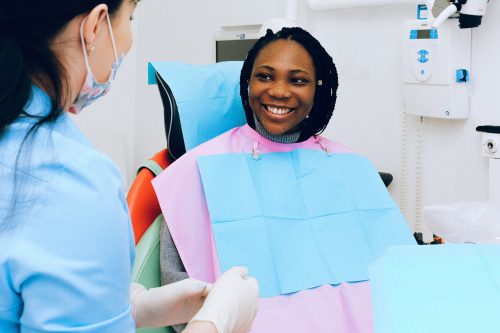
Sedation is a dental process that helps soothe anxiety and make complex treatment smoother for the patient. Sedation dentistry is a hope for people with dentophobia. If you have a phobia or anxiety related to dental, this process is for you.
Often previous bad experiences lead one to fear. Sensitivity might be an issue for some. A dentist in North York says sedation is a relief when you have to undergo an intensely complicated process for your dental treatment. In this process, drugs are used to relax the patient or to render them unconscious.
Types of Sedation
The most extensive sedative used in dentistry is general anesthesia. Under the effects of general anesthesia, the human body numbs to any pain, and the person becomes completely unconscious. Dentists with specialized knowledge in the field can only practice it. It has increased risks associated with sedatives. This process is applied in extreme cases only.
-
Nitrous Oxide
Laughing gas is used in sedation is the mildest form of sedation. This process is done through a nose tube and starts working within half a minute of inhalation. This process is also used combined with oral sedatives. This light process is for patients with a low level of anxiety. Nitrous oxide does the job while keeping the patient conscious.
-
Oral Pills
Taking an oral pill keeps you fully conscious in a relaxed state. Patients take it before the appointment or just before a day. They are monitored with a heart monitor during appointments. They might not even remember the sedation process that takes place meanwhile.
-
Intravenous Sedatives
This process also is called IV sedatives. It puts the patient into twilight sleep and has a light effect. One is not entirely unconscious during twilight sleep. Here patients feel sleepy and don’t remember the procedure. IV sedatives might result in complete amnesia due to an increased level of diazepam & Midazolam.
Caution for Sedation during Teeth Cleaning
The procedure of sedated dental treatment depends on the dentist. He decides which process to follow based on the patient’s condition. IV sedatives abstain from eating for 8 hours before the appointment. They insert an IV into the patient’s arm and start medication through the line.
The drowsy feeling of relaxation makes things easy. Dentists advise having an escort to take you home. It is better to avoid any sort of driving for the next 24 hours. Give yourself time to recover from the drowsiness.
-
Local Anesthetics- An Alternative
There is an alternative option of sedation- local anesthesia that any dentist in North York uses. Lidocaine is used to numb the area of the mouth where the treatment is to be done. This blocks sodium channels and prevents pain signals in the brain. Dentists use injections to numb the area for some 2 hours.
Sedation for Teeth Cleaning
A good dentist always tries to make you feel comfortable during treatment. Sedation is focused on the comfort level of patients. Due to their physical, mental, medical, and cognitive conditions, people with special needs require special consideration.
A compassionate dentist will take care of the fact if his patient needs special care. There are options for taking sedation even while having simple teeth cleaning. You can opt for that in case you feel so.
Conclusion
Sedation dentistry is studied intensively and deemed safe. However, the risk always remains. There are chances of drowsiness, slower reflex, headache, dry mouth, etc., though the dentist in North York takes care of their patients. We hope this article develops your understanding of the sedated process. If this helps you in some way, our purpose of writing is fulfilled.
Interesting Related Article: “What is dental tourism? Definition and meaning“

